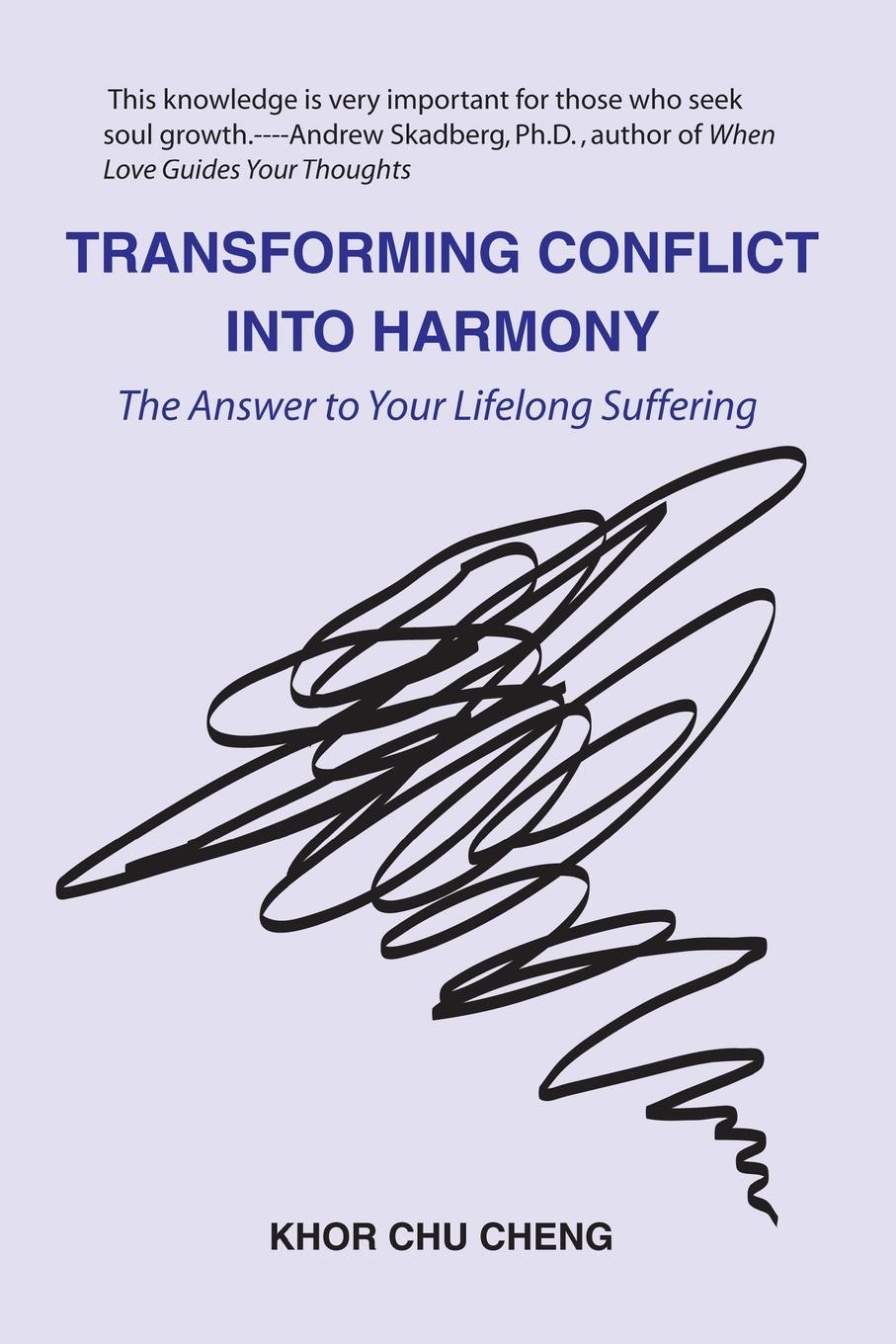Below is an e-mail I received recently from Khor Chu Cheng from Malaysia. As you will read, he is the author of a book in which he refers to the Alexander Technique in his choice of techniques which can help with improving perception of oneself.

Dear Athanase Vettas
Please take a look at the published book, “Transforming Conflict into Harmony: The Answer to Your Lifelong Suffering”.
Among other matters, the book points out the critical mistakes made by conventional psychotherapy, which renders it, in Carl Rogers’s words, “futile and inconsequential”, causing James Hillman to rant and rave against it.
It also delves on the common principle behind The Alexander Technique, EMDR, Autogenic Training, Client-Centered Therapy, Montessori Method and meditative techniques that renders these techniques/methods effective.
Below is an excerpt from the book.
Thank you.
Best regards
Khor Chu Cheng
The Alexander Technique
In the Alexander Technique, the man anchors his observation on these thoughts—allow the neck to be free to let the head go forward and up, so that the back may lengthen and widen, all together, one after the other. In Body Learning: An Introduction to the Alexander Technique, Michael Gelb says it requires “a great deal of practice.” Yes, it is so. To hold these thoughts simultaneously requires the existence of at least a small higher attention.
The Alexander Technique is effective not because these thoughts are potent or magical. Any nonsensical thoughts are just as effective. In anchoring observation on these thoughts, the conflicting impressions are not displaced and observation is not lost into these impressions; hence, they are compelled to neutralize one another.
Referring to his technique, Alexander says:
Boiled down, it all comes to inhibiting a particular reaction to a given stimulus. But no one will see it that way. They will see it as getting in and out of a chair the right way. It is nothing of the kind. It is that a pupil decides what he will or will not consent to do!
And Michael Gelb says the Alexander Technique has helped him in these ways: dealing with fear, developing attention, attention to process, going from the known into the unknown, experimental thinking, non-interference, improved kinesthesia and coordination.
These are the reasons that make the Alexander Technique effective. Instead of succumbing to habitual reactions, it helps the man to face his fears and the unknown. Instead of attempting to compel his body to adopt any desirable movements or postures, which will only make matters worse, it helps him to leave the body alone. If he is always immersed in reactions, how can he decide what he will or will not consent to do?
Indeed, if he allows the neck to be free and so on, he avoids expending excessive force, but he cannot compel the neck to be free, physically or psychologically. His neck will naturally become free when the personality is neutralized. A two-year-old child does not know about the Alexander Technique, but he naturally holds his body and moves without excessive tension. At that age, he still has a big soul and a small personality.
If the personality is neutralized, the body will naturally stay still or move impeccably, that is, without any excessive tension. The soul can look after it a thousand times better than the personality. In contrast, the muscles of the abnormal man are tense even when he is asleep. The Alexander Technique is not designed to loosen muscles. Yet, at the age of over eighty, Alexander was able to swing one leg over a chair effortlessly and smoothly.
To apply this technique in daily activities, the man must expand his observation further. For instance, if he is attempting to solve a problem, his higher attention must be big enough to encompass these thoughts plus other thoughts simultaneously.
At any rate, please spend a minute on the synopsis.
Synopsis
Is it possible to attain harmony regardless of external circumstances?
Yes, but it demands a radical change in attitude, diametrically opposite our usual one. We are deeply conditioned to believe that changing our circumstances can result in harmony, but that is impossible. External conflict is simply the result of inner, psychological conflict. Therefore, the only way to attain harmony is to neutralize our inner conflict.
Based on about thirty years of investigation, experimentation, verification and practice, this book primarily deals with the cause of inner conflict, our inner conditions engendered by inner conflict, and the principles to neutralize it.
Although scientific findings are cited to support many definite, specific and concrete statements, they need not be accepted without verification. Simple techniques, without using any equipment, to verify many of these statements are given. Hence, this is a pragmatic book—aimed at assisting the reader to neutralize inner conflict.
I agree that a certain level of conscious attention is necessary for the efficiency of any technique for change or reeducation. The ‘directions’, these mental instructions that we give to ourselves in the Alexander Technique in order to allow the body to reorganize and re-orientate himself in space, will not be efficient if repeated mechanically to help us act more freely, a certain level of attention is necessary. It is in this respect that, at the beginning, other thoughts, even meaningless thoughts, could be enough: creating a minimum level of conscious attention is necessary, whatever shape it takes. Just remembering to give directions without actually doing them is already building up conscious attention.
Our aim will be to learn to create a certain form of attention in order to create enough calm within us to allow the body to reorganize itself without us interfering during these changes and be able to act and react in this new state.
How do we learn to leave ourselves quiet, so that our body can bring changes without including our bad habits? And so that he can be associated with a better functioning?
Each technique insists on the use of specific thoughts in relation to its specific aims. The Alexander Technique offers a practical procedure aiming to improve one’s balance and the control of oneself in any activity through learning to prevent the shortening of the spine and the excessive tensions of the whole body. The first thoughts which we use will concern the freedom of the neck, the direction of the head, the length and width of the back, and the direction of the knees.
I want here to stress one particular aspect of the practical procedure implied in the Alexander Technique: the necessity of not relying on our sensations.
This is a neglected but most important aspect in self-reeducation. At first this seems quite difficult to achieve, incomprehensible for many, even impossible for some. How can we do whatever we desire to without feeling what we do, without feed-back? It is nevertheless the starting point for any real and lasting control of oneself and the beginning of change.
In the Alexander Technique, we do not try to feel if our neck, our head, our back or any other part of our body is in a good position, because we think that what we feel depends on the quality of functioning of our body and that we cannot trust the feelings associated with a state we want to change or improve. They are unreliable. We are, on the contrary, going to try to create a state which will allow us to act without taking notice of our habitual tensions which are linked with pain, inefficient movements or unsatisfactory reactions.
All our sensations and feelings have necessarily their source and are linked with the unsatisfactory state that we aim to improve. These sensations associated with a wrong functioning cannot lead us towards something different than what we know. This is the reason why somebody who has a back pain will tend to move from a position to another in order to avoid pain without really changing his way of moving. His movements when he changes position will move the pains and aches, but within the same patterns of coordination underlying the ‘bad’ positions and movements. In the same way somebody who is trying to increase the precision of his movements will tense more in order to increase the control and will achieve (or not) his aim at a very high cost. A depressed person will produce specific sensations which lead her to act and think accordingly and will not be able to lead herself to positives actions.
To trust ones sensations is natural and it is difficult at the beginning to conceive that we can do anything without trusting what we feel. It is understandable because we could not exist without the information given by our senses.
In the Alexander Technique, we start by not trusting what we feel in order to be able to give ourselves mental instructions which will improve the balance and coordination of our body. Ultimately, our sensations will become more and more reliable. More important though, will be our improved capacity to recognize the sensations which are associated with unnecessary tensions and a shortened body, and know that they will not be reliable to improve the conscious control of ourselves.
Putting it simply, it means learning not to take account of what and how we feel while we try to correct ourselves. While we try to correct the way we do something, or the way we move because it hurts, it is important not to trust what we feel because we would find ourselves doing exactly what we are trying to avoid and to correct. We have to learn to consciously dis-connect ourselves from the tendency to react instantly to what we feel.
Let us take the example of this very simple and natural human activity: walking. Why is it that so many people develop pains or get excessively tired in walking? The specific way we move our legs when we walk is felt as normal. It comes ‘naturally’. We do not need to think about it. We are not aware neither of any unnecessary tension we create. And if we feel some discomfort or pain, we think that we just need to relax ourselves, to be a bit more careful to bring some change and improvement. We do not realize that by doing so we are reacting to our habitual sensations which are associated with our habitual way of walking.
What can we do if we can’t even trust our own sensations in order to correct ourselves? The Alexander Technique replies: give yourself mental directions.
To secure the efficiency of these mental directions, we need first to prevent the habitual reactions to our habitual sensations. It is not about repressing our sensations. It is about accepting them without responding to them, to be able later to observe them as long as our disatisfactory state will produce them.
At the beginning, we will learn to recognize our tendency to react in the same way to our habitual sensations, then we will learn not to respond to them habitually, and progressively learn to allow the body to reorganize itself during this phase of suspension of our first reaction. Alexander talks of conscious inhibition.
I would like to add that all theses words and analyses are necessary to understand what happens and find a way of dealing with it, but that in reality the natural functioning and the mastered application of a method need no words. Everything happens in a continuous movement where there is no beginning nor end, but a continuous adaptation to the flow of life in a vital search for the right orientation.
I remind the reader that the help of an Alexander teacher is invaluable to learn to jump from we are used to (the known), either they are inefficient movements, unsatisfactory reactions or muscular aches, to a state of better functioning (unknown yet and thus unreachable through habitual sensations).



